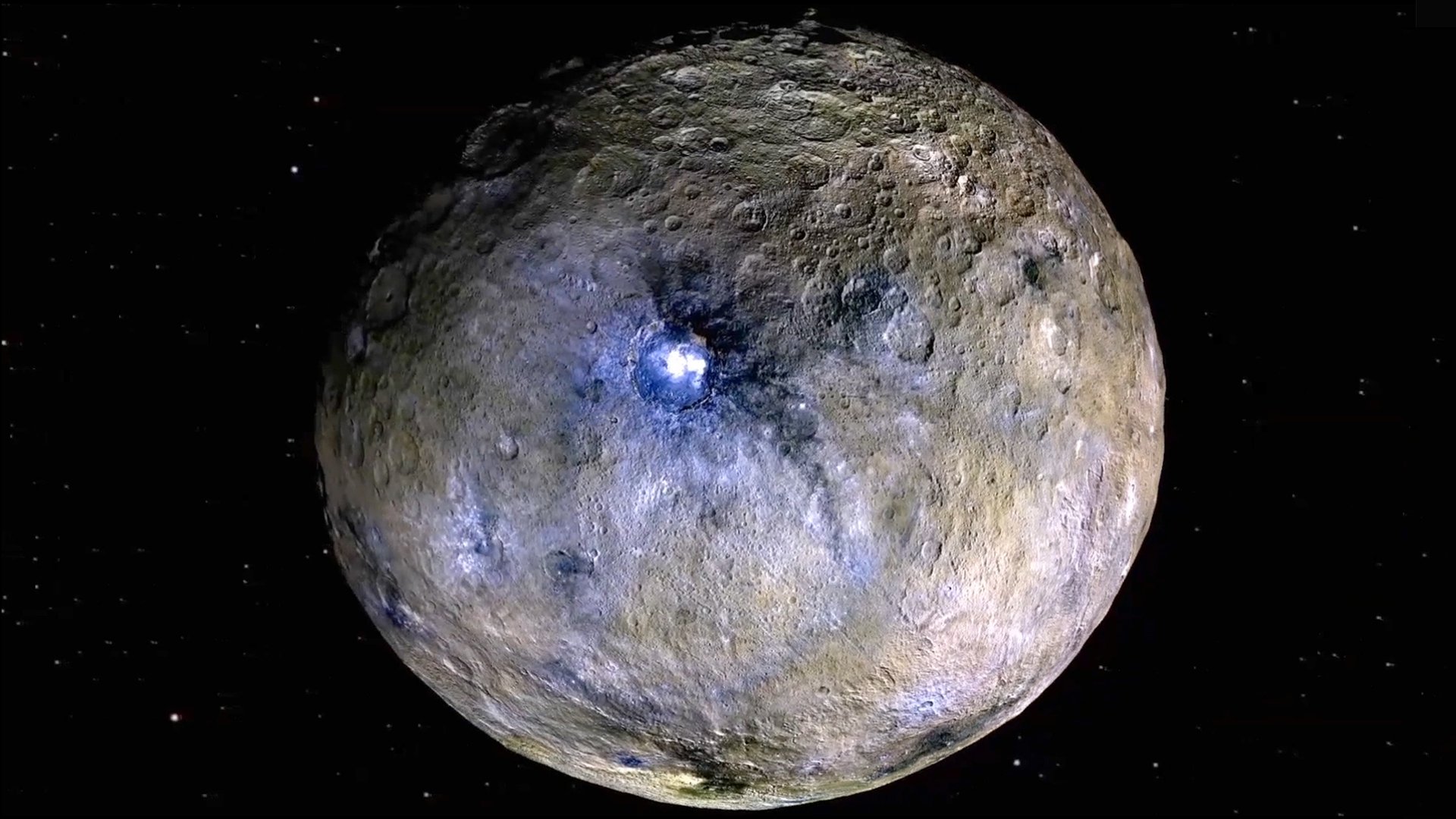NASA’s Lucy will be the first-ever mission to study Trojan asteroids
By visiting 4-billion-year-old “fossil” space rocks, the Lucy mission hopes to reveal how our solar system, and its outer planets, formed.

Artist's conception of Lucy spacecraft flying past the Trojan asteroid 617 Patroclus and its binary companion Menoetius. Image Credit: NASA Goddard
In 1974 in Ethiopia’s Awash Valley, paleoanthropologist Donald Johanson and his team uncovered dozens of pieces of fossilized bone. Together, they represented 40% of the skeleton of a female Australopithecus afarensis, a 3.2-million-year-old hominin that stood a little over 3 feet tall.
The skeleton’s official name is AL 288-1. But at the excavation camp on the night after her recovery, Johanson played The Beatles’ “Lucy in the Sky with Diamonds” from his little Sony tape deck. The next morning at breakfast, it was settled: The skeleton would be named Lucy, Scientific American reported in 2014.
Since her discovery 47 years ago, Lucy (and the early hominin fossils archaeologists subsequently uncovered) has transformed scientists’ understanding of human evolution. Now, a new Lucy aims to illuminate the history of our entire solar system—and perhaps our place in it.
NASA’s Lucy, the first-ever mission to study a set of mysterious asteroids that orbit the sun with Jupiter, will launch tomorrow (Saturday, Oct. 16). The mission is named after the Lucy fossil because the asteroids it will visit “are fossils of planet formation,” Lucy Project Manager Donna Douglas-Bradshaw said in a NASA interview. These asteroids, called the Trojan asteroids, orbit the sun close to Jupiter. They’re “believed to be pristine remnants of our solar system formation,” Douglas-Bradshaw said.
Cory Prykull, the Lucy assembly, test, and launch operations lead at Lockheed Martin Space, joked that asteroids, which are space rocks made of silicas and metals, can seem “relatively boring.” But as “planet fossils,” they also “hold all kinds of stories of where they came from, how they were formed, and what materials are actually in these different portions of the solar system,” he said in a NASA interview. At about 4 billion years old, the Trojan asteroids are some of the oldest fossils in our solar neighborhood. And, Prykull explained, they “represent the fragments left over from the formation of the outer planets.”
So far, astronomers have only gazed at the Trojans from afar, using large telescopes and other observation equipment here on Earth. This equipment, though impressive, yields only “really grainy pictures” of the asteroids, Prykull said: “We’re extremely excited to go and visit them because of our total lack of understanding of exactly what is out there.”
With Lucy, astronomers hope to get high-definition images and “some key insights as to what materials are in these Trojan asteroids,” Prykull said. Better understanding what these materials are could help researchers parse out what building blocks were available during the formation of our solar system. “What we really want to find out," Prykull said, is what “things were available to create these outer planets. And that’s just going to vastly increase our knowledge and understanding of how our planets were formed and consequently how we as a cosmic and solar system neighborhood really came to be into our own.”
Lucy’s 12-year mission, which will span a total of 4 billion miles, will start with a one-year orbit of Earth. Next comes an Earth-gravity assist, a flyby technique that will “pump up our energy and our trajectory” to the asteroids, Douglas-Bradshaw said. “You can think of Earth as being a slingshot,” she added.
Lucy will first slingshot to the “L4 swarm” of Trojan asteroids, located in a region ahead of Jupiter’s orbit. Then the spacecraft will head back to Earth, slingshot once again via another gravitational assist, and head to the remaining set of Trojans.
Prykull, who’s worked the Lucy mission since its first pieces “hit the production floor” is most excited for tomorrow’s launch, he said, “and [when] our spacecraft has fully deployed solar arrays and it’s nominally healthy, out in space, ready to start its journey.”
Curious about Lucy mission updates? Check out NASA’s Lucy Mission Resources page and follow its social media accounts at @NASA.



